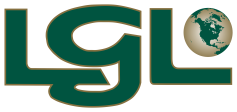MARINE MAMMAL AND ACOUSTIC RESEARCH
Scientists from LGL have experience working with:
- Cetaceans (whales, porpoises, dolphins)
- Pinnipeds (seals, sea lions, walrus)
- Polar bears
Specialized services:
- Aerial, vessel, and shore-based surveys
- Marine mammal observers
- Measurements of underwater and in-air noise
- Passive acoustic monitoring
- Radio and satellite telemetry
- Geographic information systems (GIS) and remote sensing
- Environmental management and planning
For over 50 years, LGL has conducted marine mammal research and monitoring along the Atlantic, Pacific, Arctic, and Gulf of Mexico coasts of Canada and the U.S.A., as well as numerous projects overseas.
Objectives of projects can include:
- Environmental impact assessments (U.S. NEPA compliance)
- Incidental Harassment Authorization (IHA) and Letter of Authorization (LoA) applications for U.S. Marine Mammal Protection Act compliance
- Literature reviews
- Mitigation and monitoring of potential effects of development and disturbance
- Seasonal distribution and abundance
- Foraging ecology
- Habitat use assessment
- Photography and photo-identification / cataloguing
MARINE MAMMALS & NOISE
 LGL and associates literally “wrote the book” on effects of noise on marine mammals. After years of studies of the effects of industrial disturbance on whales and other marine mammals in the Atlantic, Pacific, and Arctic oceans, LGL scientists compiled their information with collaborating partners to publish a comprehensive treatise on the subject (Marine Mammals and Noise, 1995, Academic Press)
LGL and associates literally “wrote the book” on effects of noise on marine mammals. After years of studies of the effects of industrial disturbance on whales and other marine mammals in the Atlantic, Pacific, and Arctic oceans, LGL scientists compiled their information with collaborating partners to publish a comprehensive treatise on the subject (Marine Mammals and Noise, 1995, Academic Press)
MARINE MAMMALS & NOISE
LGL and associates literally “wrote the book” on effects of noise on marine mammals. After years of studies of the effects of industrial disturbance on whales and other marine mammals in the Atlantic, Pacific, and Arctic oceans, LGL scientists compiled their information with collaborating partners to publish a comprehensive treatise on the subject (Marine Mammals and Noise, 1995, Academic Press).
IMPACT ASSESSMENT, MITIGATION, AND PERMITTING SUPPORT
LGL has experience linking agency-enforced requirements to operational plans to support operational efficiency and project delivery.
Start-to-finish regulatory support:
- Agency consultations, including Biological Opinions, Section 7 Consultations
- Community meetings
- Permit application preparation (Incidental Harassment Authorizations, Letters of Authorization, Biological Assessments, Environmental Assessments)
- In- and post-season reporting
Customized monitoring and mitigation plans:
- Ensure regulatory compliance
- Maximize operational efficiency
- Collect high-quality data
- Produce robust reports
LGL has developed long-term working relationships with:
- State, province, federal, borough, and local governments
- Native Corporations and Indigenous councils and governments
- Scientific community
- Collaborative corporate partners
LGL recognizes that continuous dialog among agencies, local stakeholders, and clients is critical to build cohesive working relationships and preempt regulatory hurdles in‑season.
MARINE WILDLIFE AERIAL SURVEY
LGL has a long history of delivering safe, cost-effective aerial programs, and providing innovative solutions to meet study objectives.
Manned and unmanned photographic surveys:
- Conducted more than 1,000,000 miles of aerial surveys
- Operated out of a wide range of charter aircraft
- Safe and efficient operations in remote regions
Customized photographic surveys:
- Camera packages configured for target species, area coverage, and on-water resolution
- Adaptive design and installation of camera mounting systems within aircraft
- Flexible survey planning to accommodate dynamic operational and regulatory considerations
Marine mammal automated detection:
- Developed species-specific software to detect Arctic marine mammals
- Automated detections were ground-truthed with manual image analysis detections
- Delivered an end-product capable of producing cost effective, near real-time results
Specialized equipment available:
- Professional-grade photographic equipment
- High-speed processors for image download and management
- Image analyst workstations
Our seasoned staff members, proficient in traditional methods and emerging technologies, design and implement aerial programs that are customized to client needs and project specifications.
DATA MANAGEMENT AND REPORTING
LGL offers support for all stages of data management, from database planning and design to final validated data, statistical analysis, and reporting.
Custom database construction, including:
- Database planning, design, and implementation
- Development and testing of custom data collection forms
- Restricted values and automated error flagging
Efficient, accurate data collection ensured by:
- Automated data collection and validation where appropriate
- Detailed manual review where required
- Low-bandwidth options for remote field sites
Flexible in-season reporting:
- Multiple reporting streams (daily, weekly, event triggered)
- Automation of reports available in a variety of formats
- Easy access to data through pre-defined queries and online maps
GIS integration to facilitate:
- Collection of spatially aware data
- Ability to uncover geographic patterns and trends
- Interactive web mapping
LGL’s data management team emphasizes automation and web-based application to ensure clarity, accuracy, and accessibility of data to clients and stakeholders in near real‑time.
EMERGING TECHNOLOGY
LGL is at the forefront of emerging technologies in marine mammal science that improve monitoring efforts and increase safety, reliability, and efficiency. Similarly, we use state-of-the-art methods when avian detection is a required component of an offshore observation program.
Passive acoustic monitoring:
- Collaborated to create one of the largest and most comprehensive sets of underwater acoustic data collected globally to date
- Custom-designed autonomous recorders to document sounds produced by anthropogenic activities and marine mammal vocalizations
- LGL projects have incorporated both towed and fixed acoustic monitoring
Aerial digital marine wildlife monitoring:
- Professional-grade photographic equipment installed and operated in manned aircraft and unmanned aerial systems (UAS)
- Reduced risk exposure compared to deployment of visual observers
- Expertise in large-scale image data management, synthesis, and analysis
- Developed automated detection software for marine mammal monitoring to deliver cost effective, near real-time results
Infrared technology:
- One of the most promising methods for detecting marine mammals during darkness or poor visibility conditions
- LGL has conducted surveys using both aerial, vessel, and shore‑based infrared systems



